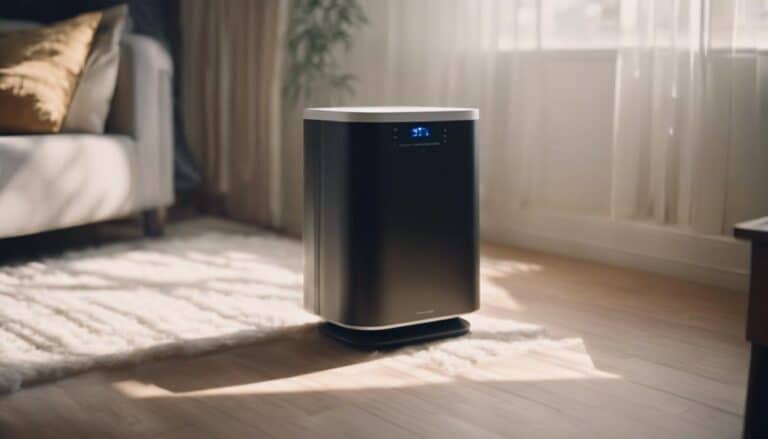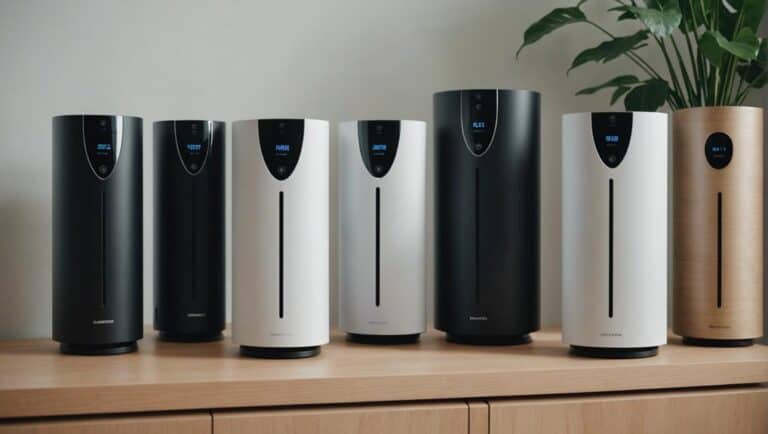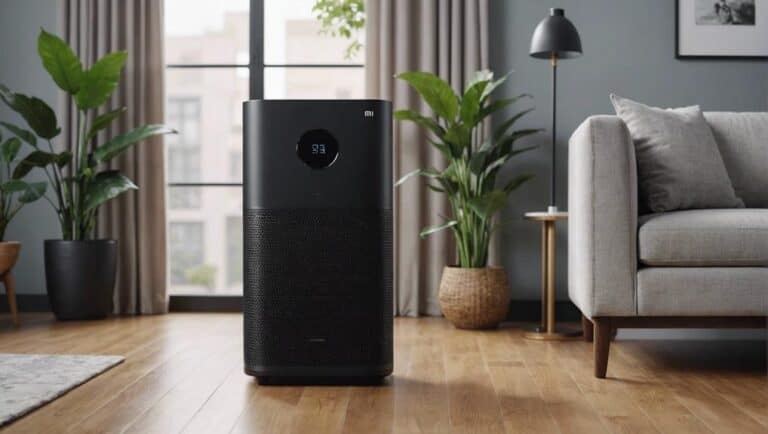The Ultimate Guide: Step-by-Step Instructions on How to Properly Recharge Your Window AC Unit
Having a well-functioning window AC unit is essential for maintaining a comfortable indoor environment during hot summer months. However, just like any other appliance, these units require regular maintenance and care to ensure optimal performance.
One crucial aspect of proper AC unit maintenance is knowing how to recharge it when necessary. In this comprehensive guide, we will provide you with detailed step-by-step instructions on how to properly recharge your window AC unit, allowing you to enjoy cool and refreshing air without any hassle or inconvenience.
So let’s dive in and discover the ultimate way to keep your window AC running efficiently throughout the scorching summer season.
Understanding the Signs of a Low Refrigerant Level
- Strange noises: If your window AC unit is making unusual sounds such as hissing or bubbling, it could be a sign of low refrigerant levels. The lack of refrigerant causes the system to work harder, resulting in these abnormal noises.
- Ineffective cooling: One obvious indication of low refrigerant levels is when your AC unit no longer cools your room properly. You may notice that despite running at maximum capacity, the air coming out of the vents remains warm or barely cool.
- Constant cycling: A window AC unit that frequently turns on and off within short intervals can also hint at low refrigerant levels. This behavior occurs as the system struggles to maintain the desired temperature without enough refrigerant.By recognizing these signs early on, you can save yourself from further complications and address the issue promptly. Recharging your window AC unit with fresh refrigerant will not only ensure optimal performance but also extend its lifespan. In our next section, we will guide you through this process step by step.
Gathering the Necessary Tools and Supplies
Before you start recharging your window AC unit, make sure you have all the required tools and supplies ready. Here’s a checklist to help you gather everything:
- A recharge kit: Look for a recharge kit specifically designed for window AC units. It usually includes a refrigerant canister, pressure gauge, and hose.
- Protective gear: Wear gloves, safety goggles, and a face mask to protect yourself from any potential leaks or harmful chemicals.
- Screwdriver set: You may need different types of screwdrivers to remove panels or access components within the AC unit.
- Towels or rags: Keep absorbent towels or rags handy in case of spills during the process.
Once you have gathered these tools and supplies, it’s time to move on to the next step – preparing your AC unit for recharging.
Safety Precautions Before Starting the Recharge Process
- Turn off and unplug the window AC unit before beginning any work.
- Wear protective gloves and safety goggles to avoid any contact with harmful refrigerants or chemicals.
- Make sure to work in a well-ventilated area to prevent inhaling fumes.
- Use a sturdy ladder or step stool to safely access the AC unit, ensuring no risk of falling.
- Read and follow all instructions provided by the manufacturer for both the AC unit and recharge kit.
Step 1: Locating the Service Valve on Your Window AC Unit
Locating the Service Valve on Your Window AC Unit
To properly recharge your window AC unit, you first need to locate the service valve. This valve is essential for adding refrigerant to your air conditioner. The good news is that finding it isn’t too difficult.
- Start by turning off your air conditioning unit and unplugging it from the power source.
- Remove any protective covers or panels that may be blocking access to the service valve.
- Use a flashlight if needed, and inspect around the condenser coils of your window AC unit.
- Look for a small metal tube with a cap or cover on one end – this is likely where you’ll find the service valve.
Once you’ve located the service valve, proceed to step two of our guide for recharging your window AC unit in no time!
Step 2: Attaching the Recharge Hose to the Service Valve
Attaching the Recharge Hose to the Service Valve
- Locate the service valve on your window AC unit. This valve is typically located near the refrigerant line connections at the back of the unit.
- Clean any dust or debris from around the service valve using a soft cloth or brush. This will ensure a clean connection and prevent any contamination during recharging.
- Take your recharge hose and remove any protective caps from both ends. One end of the hose should have a quick-connect fitting, while the other end should have a screw-on fitting.
- Attach the quick-connect fitting to the service valve by firmly pushing it onto the valve until it clicks into place.
- Once attached, secure the connection by twisting clockwise until snugly fitted. Be careful not to over-tighten as this may damage or strip the threads on either part.
- Ensure that all connections are secure before proceeding to prevent any refrigerant leaks during recharging.
Remember, proper handling of refrigerant is crucial for safety reasons and to avoid damage to your window AC unit. Consult your manufacturer’s manual or seek professional assistance if you are unsure about any step in this process.
Sources:
- How To Recharge a Window Air Conditioner Unit: Basics For Home DIY
- [How To Refill Your Window A/C Unit If It Leaks Refrigeration | PartSelect.com]
Step 3: Adding Refrigerant to Your AC Unit
Once you have determined that your window AC unit requires refrigerant, follow these steps to add it properly:
- Turn off and unplug the air conditioner. Safety should always be your top priority when working with electrical appliances.
- Locate the service valves on your AC unit. These are typically small, metal caps located on copper tubes near the compressor or condenser unit.
- Use an adjustable wrench to remove the caps from both service valves.
- Attach the refrigerant hose to the low-pressure service valve. This is usually indicated by a blue cap or “L” label.
- Slowly open the valve on your refrigerant canister and allow it to flow into the system through the hose. Be sure to check for any leaks as you do this.
- Monitor the pressure gauge on your AC unit while adding refrigerant until it reaches within recommended levels for optimal performance (refer to manufacturer’s instructions for specific guidelines).
- Once you have reached proper pressure, close both service valves tightly with an adjustable wrench and replace their caps securely.
- Plug in and turn on your window AC unit, allowing it some time to operate and cool down before checking if additional recharging is required.
By following these steps carefully, you can ensure that your window AC unit is properly recharged with refrigerant, which will help keep it functioning effectively throughout hot summer months.
Step 4: Monitoring the Pressure and Refrigerant Level
Monitoring the Pressure and Refrigerant Level
After connecting all the necessary equipment, it is time to monitor the pressure and refrigerant level of your window AC unit.
- Start by turning on the AC unit and letting it run for a few minutes to stabilize.
- Use a manifold gauge set to check the pressure levels in both low-side and high-side ports.
- The recommended pressure range will vary depending on the specific model, so refer to the manufacturer’s instructions or consult with an HVAC professional if needed.
- If the pressure readings are outside of the desired range, you may need to add or release refrigerant accordingly.
- Keep monitoring as you recharge your window AC unit, ensuring that you do not overfill it with refrigerant.
Remember that improper handling of refrigerants can be dangerous and may damage your AC unit or even pose health risks. It is always best to follow proper guidelines provided by professionals when recharging your window AC unit’s refrigerant level.
Conclusion
Monitoring the pressure and refrigerant level is a crucial step in properly recharging your window AC unit. By following these steps carefully, you can ensure that your air conditioner functions optimally, providing cool air throughout those sweltering summer days!
Step 5: Disconnecting the Recharge Hose and Finishing the Process
Disconnecting the Recharge Hose and Finishing the Process
- Remove the recharge hose from your window AC unit by gently twisting it counterclockwise.
- Replace the screw cap on the low-pressure service valve to seal it tightly.
- Once you have disconnected the recharge hose, carefully store it in a clean and dry place for future use.
- Now that you have successfully recharged your window AC unit, proceed with these final steps to ensure everything is properly finished.
- Plug in your AC unit back into an electrical outlet if needed, making sure it is securely connected.
- Turn on your window AC unit and wait for it to reach its desired temperature before closing any windows or doors.
Remember, safety should be paramount during this process! If at any point you feel uncertain or uncomfortable performing these steps yourself, consider contacting a professional HVAC technician for assistance rather than taking unnecessary risks with your equipment or personal well-being.







One Comment